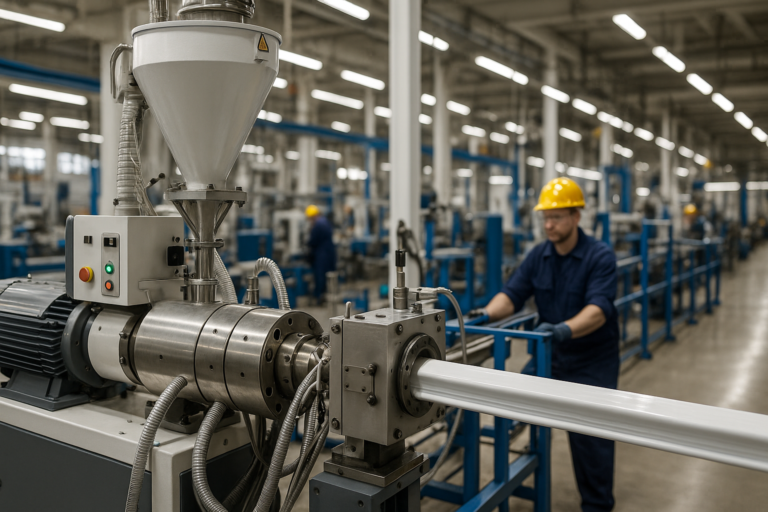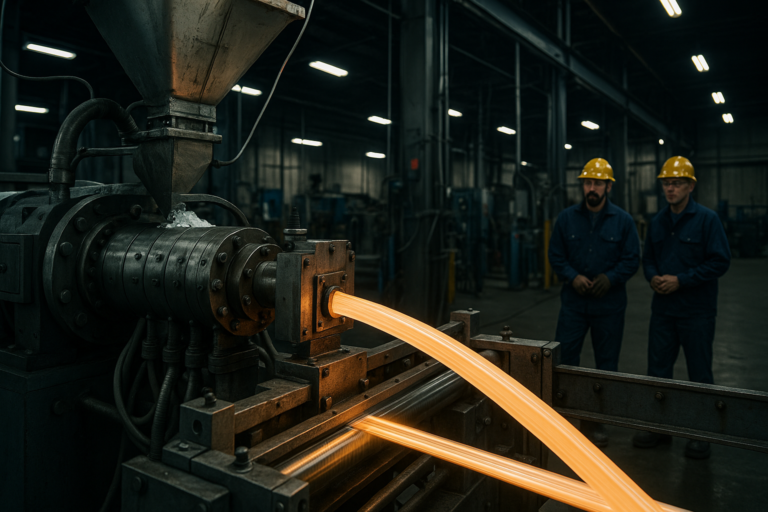Nehmen Sie einige Änderungen an der Weltumgebung vor
-
Gebäude 3, Wanyang Innovation City, Langxia Street, Yuyao City, Provinz Zhejiang
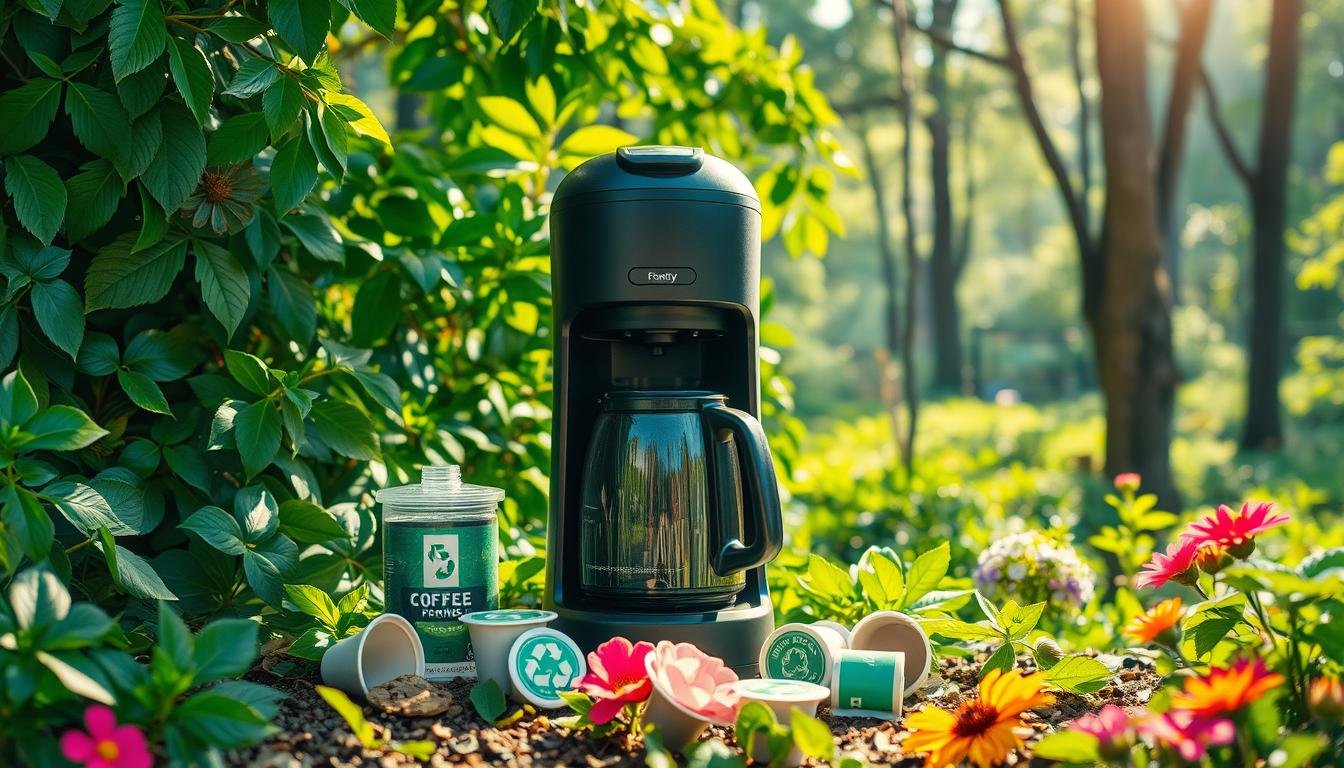
Wie Sie Ihre Keurig-Maschine ordnungsgemäß recyceln
Ever wondered what happens to your old Keurig machine once it’s no longer brewing your morning coffee? The answer might surprise you. Many of us don’t realize the environmental impact of improperly disposing of our coffee makers, and how pivotal it is to recycle them responsibly. By understanding how to manage Keurig machine disposal effectively, we can take a significant step toward sustainable living.
Keurig machines are a common household item in the U.S., but unfortunately, many end up in landfills when they could be recycled1. Properly recycling your Keurig not only conserves resources but also reduces landfill waste and supports local recycling programs1. These coffee makers are composed of recyclable materials like plastic, metal, and glass, making them ideal candidates for eco-friendly coffee maker recycling1. Additionally, using Elektroschrott-Recycling programs and manufacturer take-back initiatives ensures that your Keurig machine is disposed of in an environmentally responsible manner.
With initiatives from local recycling programs and services like LoadUp, we can ensure that our old coffee makers don’t just sit in landfills. Let’s break down the steps you can take to recycle your Keurig machine in an eco-friendly way, from assessing its condition to taking advantage of specialized recycling services.
Wichtigste Erkenntnisse
- Richtig Keurig machine disposal is crucial for reducing environmental impact.
- Recycling a Keurig machine involves making use of local e-waste programs and manufacturer take-back options.
- Eine eco-friendly coffee maker recycling approach includes understanding the recyclable materials in the machines.
- Specialized services like LoadUp can help ensure sustainable Keurig disposal.
- Reusing or donating working coffee machines helps prolong their life and reduce waste.
Understanding Keurig Machines and Their Environmental Impact
When examining the environmental impact of coffee makers, it’s vital to consider the materials used and the waste generated by popular brands like Keurig. Keurig machines, while offering convenience, do pose significant environmental challenges due to their plastic components and single-use coffee pods.
Annually, a Keurig user generates approximately 5.63 lbs of waste, summing up to around 180 million pounds of waste produced by pod-style coffee makers in the US alone2. Additionally, there are enough coffee pods in landfills to wrap around the earth more than 10 times, emphasizing the urgent need for sustainable solutions3. Switching from non-recyclable #7 plastic to #5 plastic for K-Cups is a positive change, but the availability of recycling facilities varies by city3.
Keurig’s own Lifecycle Assessment (LCA) studies generally support the findings of other environmental impact studies, although the methodology used in Keurig’s original study remains unverifiable3. Notably, traditional drip coffee makers also contribute significantly to the environmental footprint, particularly when heated for extended periods beyond 37 minutes3. This underscores the intricate balance between different brewing methods and their respective impacts.
Die eco-friendly coffee brewing landscape is further complicated by greenhouse gas emissions from producing the pods’ packaging and dealing with the resultant waste4. Media scholars like Max Boykoff of the University of Colorado Boulder caution against oversimplifying the issue by focusing solely on individual actions, suggesting broader climate solutions are necessary4.
Moving towards sustainable coffee machines demands not only improvements in manufacturing and materials but also enhanced recycling methods. Companies like Nespresso invest significantly in recycling programs, yet only a fraction of their pods get recycled (36% to 37% in the U.S.), highlighting the continuing challenge of reducing waste in the coffee industry4.
Zur Abmilderung der environmental impact of coffee makers, consumers and companies must collaborate on innovative solutions for eco-friendly coffee brewing while also advocating for broader regulatory measures in the plastic and fossil fuel industries4.
| Environmental Impact Factors | Statistik |
|---|---|
| Waste per Keurig User | 5.63 lbs/year2 |
| Total US Pod-Related Waste | 180 million lbs/year2 |
| Pods in Landfills | Wrap around Earth 10 times3 |
| Recycling Rate of Nespresso Pods | 36-37% in the U.S4. |
Assess the Condition of Your Keurig Machine
Before deciding on the next steps for your Keurig machine, it’s important to evaluate whether it is still functional or not. Knowing this will help us determine the most sustainable path for its disposal.
Reuse Options for Working Machines
For those machines that are still functioning, we have several options to extend their lifespan. Keurig machine reuse is beneficial for promoting a circular economy and reducing waste. We can donate these working units to friends, family, or local organizations, or sell them online. This not only benefits others but also helps in conserving resources by maximizing the machine’s usability.
Recycle Options for Non-Working Machines
For those machines that have reached the end of their operational life, it is essential to recycle broken Keurigs properly. Breaking down the machine into its recyclable components—such as plastic, metal, and electronic parts—ensures that valuable materials are reused and harmful waste does not end up in landfills. Proper recycling is a key step in the Keurig refurbishment process, turning old and broken machines into reusable materials.
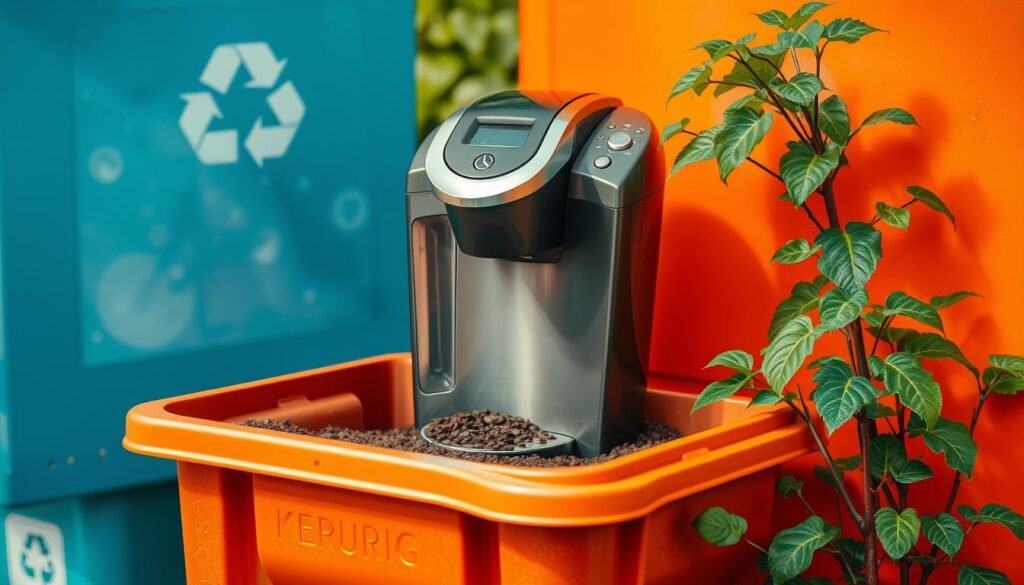
With millions of coffee pods ending up in landfills and contributing to waste, it is crucial to take these steps seriously. Only 6-9% of plastics are recycled in the U.S., making the effective handling of materials from broken Keurig machines even more critical5. Moreover, parts like metal and electronic components have a higher recycling rate, with 34% of metals and 67% of paper from municipal solid waste being successfully recycled5.
Local E-Waste Recycling Programs
Local Elektroschrott-Recycling programs are crucial for managing and disposing of electronic appliances like Keurig machines. These programs ensure that harmful materials present in electronic waste, such as metals and plastics, are efficiently processed, preventing environmental contamination. Engaging in such programs supports eco-friendly appliance disposal and adheres to state regulations.
Finding a Nearby E-Waste Facility
To locate a nearby e-waste facility, start by researching local electronic waste programs available in your area. Many communities offer dedicated Elektroschrott-Recycling events or have permanent drop-off locations that handle e-waste, including coffee makers. Utilizing authorized facilities guarantees that your electronic waste will be handled responsibly.
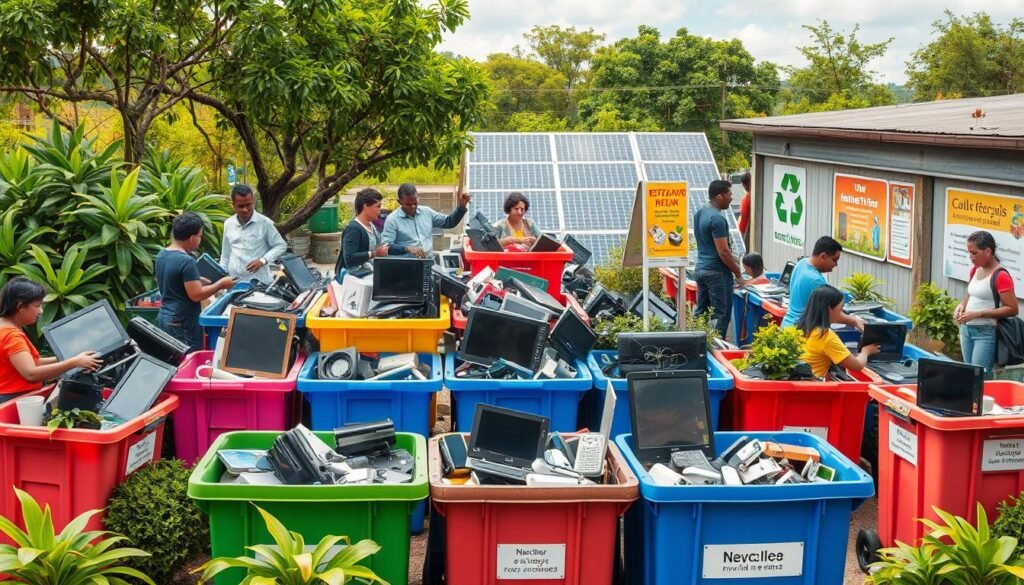
Importance of Proper Disposal
Proper disposal of e-waste is vital for reducing the harmful impact on the environment. For instance, the U.S. generates around 230 tons of trash each year, which underscores the need for eco-friendly disposal solutions and highlights the importance of programs that promote recycling and reducing waste volume6. By participating in local e-waste recycling programs, we can ensure that our electronic appliances are disposed of in a manner that is both environmentally responsible and compliant with state regulations.
Take Advantage of Manufacturer Take-Back Programs
Many companies, including Keurig, are taking significant steps to address electronic waste through manufacturer take-back services. These programs provide consumers with convenient options to return their used Keurig machines for proper recycling. Not only does this help reduce e-waste, but it also ensures that the recycling process adheres to environmental standards.
Keurig’s recycling program is a key component of their commitment to sustainability.
Keurig’s Take-Back Initiatives
Die Keurig recycling program includes several initiatives designed to manage the environmental impact of disposable single-serve coffee pods. In 2023 alone, 284,396 pounds of polypropylene were recycled through the K-Cycle® program, while 749,571 pounds of coffee grounds were composted as part of the process7. This demonstrates Keurig’s efforts to promote a circular economy, minimizing waste and maximizing resource recovery.
Additionally, Keurig has introduced specific recycling boxes tailored to different needs. The Keurig® K-Cycle® RecyclingBox – Small is ideal for small to medium-sized offices and businesses that consume up to 300 K-Cup® pods per month, with a capacity of 175 pods7. For larger environments such as hotel and airport lounges, the Keurig® K-Cycle® RecyclingBox – Large can accommodate up to 400 pods7.
Other Manufacturer Programs
While Keurig leads with its robust take-back services, other manufacturers also offer electronic waste solutions. For instance, Cambio Roasters has developed Keurig-compatible coffee pods made out of aluminum, which are claimed to be infinitely recyclable8. This innovation by Cambio emphasizes a shift towards more sustainable practices across the industry.
Furthermore, Nespresso pods now contain 80% recycled aluminum with a global recycling rate of 32%8. These manufacturer take-back programs not only support environmental sustainability but also provide consumers with viable options to responsibly dispose of their electronic waste.
By participating in these programs, we can contribute to a more sustainable future and ensure that electronic waste solutions are effectively implemented. Such initiatives are pivotal in promoting a culture of recycling and waste minimization globally.
Utilize Specialized Recycling Services
Utilizing specialized recycling services can significantly simplify the process of responsibly disposing of your old Keurig machine. Engaging in professional recycling services, such as those offered by LoadUp, ensures that your disposal efforts are both environmentally sound and hassle-free.
LoadUp Services
LoadUp disposal services are well-known for their convenient and efficient recycling solutions, catering specifically to items like coffee makers and other appliances. With in-home pickup services insured up to millions of dollars, LoadUp provides a safe and professional experience for customers9. Opting for these services often results in significant time and cost savings.
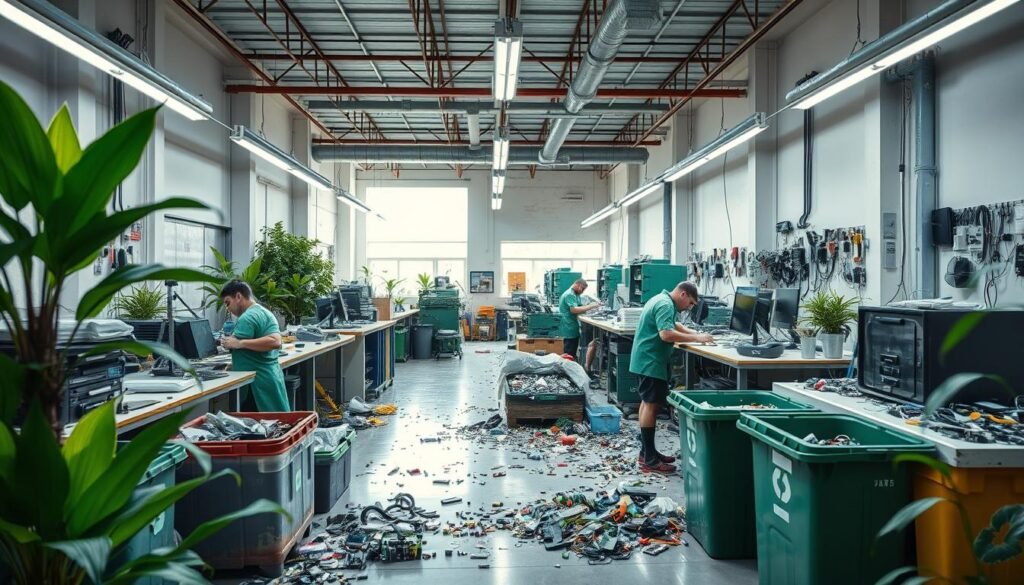
Benefits of Using a Professional Service
Wählen Sie specialized e-waste removal services like LoadUp comes with numerous advantages:
- Cost-effectiveness: LoadUp claims to be 20-30% cheaper compared to traditional junk or waste companies9. This can provide substantial savings, particularly given that they guarantee upfront prices with no hidden fees9.
- Eco-friendly Disposal: In line with the eco-friendly mission, LoadUp ensures that a significant portion of removed items are recycled or disposed of responsibly. Given that the U.S. generates around 230 tons of trash annually, having a service dedicated to green disposal is essential9.
- Customer Satisfaction: The service boasts over 5,170+ verified reviews, highlighting the reliability and quality of LoadUp disposal services9.
Beyond these benefits, professional recycling services also provide the advantage of removing and recycling items directly from your home. This level of convenience, combined with the assurance of environmentally responsible disposal methods, marks a significant step towards sustainable living.
Recycling K-Cups and Coffee Pods
Recycling K-Cups and coffee pods can seem daunting, but with a bit of effort, we can make a significant environmental impact. Since K-Cups consist of polypropylene plastic (#5 plastic), which is not universally accepted for recycling, it becomes crucial to take the right steps to ensure effective recycling10.
Disassemble for Proper Recycling
Disassembling K-Cups properly is essential for ensuring their components are recycled correctly. K-Cup recycling requires separating the plastic, aluminum, coffee grounds, and paper filters. Tools such as the Recycle A Cup® cutter are designed to assist in this process, working with most coffee pod designs, including K-Cups, although compatibility with all brands may vary due to differences in pod sizes and thicknesses11.
It’s important to segregate the components effectively:
- Plastic Shell: The #5 plastic can be recycled where facilities accept it.
- Aluminum Lid: Aluminum is widely recyclable and can be processed with other metal recyclables.
- Coffee Grounds: These can be composted but require commercial composting facilities to break down fully1011.
- Paper Filter: This can either go into paper recycling or be composted.
Programs for Recycling K-Cups
Beyond individual efforts, several programs can aid in K-Cup recycling. The K-Cycle® program, for example, managed to recycle 284,396 pounds of #5 polypropylene plastic cups, compost 749,571 pounds of coffee grounds, and repurpose 68,343 pounds of materials for energy recovery in 20237. This highlights the efficiency and impact that organized recycling efforts can have.
Keurig and TerraCycle also offer mail-in recycling services targeted at corporate users, providing a more accessible option for businesses10. For individual users, reusable coffee pods such as Keurig My K-Cup offer an alternative that reduces waste by allowing simple cleaning and repeated use10. Nespresso provides free recycling for their aluminum capsules, positively contributing to reducing coffee pod disposal Ausgaben10.
Programs like Grounds to Grow On support K-Cup recycling by offering packaging and shipping solutions for used pods, ensuring they reach recycling centers equipped to handle their different components efficiently.
Alternative Uses for Your Old Keurig Machine
When considering what to do with an old Keurig machine, there are numerous creative and practical ways to give it new life. Whether you’re inclined towards DIY coffee maker projects or interested in donating electronics for parts, there are many eco-friendly options available.
DIY-Projekte
Repurpose your old Keurig machine into something entirely new with simple DIY coffee maker projects. This approach not only saves the machine from ending up in a landfill but also offers an opportunity to get creative. For instance, old Keurig machines can be transformed into automated plant waterers, offering an innovative way to keep your indoor plants hydrated. Additionally, parts from the Keurig can be utilized in crafting projects for educational purposes, such as building simple mechanical models for science experiments. Such reuses contribute to the environment by promoting recycling and reducing waste.
Donating for Parts
Another effective way to manage an old Keurig machine is by donating electronics for parts. These components can help repair other machines or be repurposed into new devices. Organizations and community groups often seek electronic donations for educational and repair purposes. By donating your old Keurig, you are supporting a cycle of reuse that extends the lifespan of products and minimizes electronic waste. Additionally, nearly 9 billion K-Cups end up in landfills each year, making it crucial to find sustainable ways to manage these products12. This option is not only environmentally friendly but also assists others in the community.
In conclusion, whether you choose to repurpose a Keurig machine through creative DIY projects or consider donating electronics for parts, you are contributing positively to the environment. As we become more aware of the impact of electronic waste, exploring these innovative and sustainable practices will continue to be essential.
Schlussfolgerung
As we wrap up our guide on responsible Keurig disposal, it is clear that adopting green coffee brewing practices and utilizing sustainable kitchen appliances are essential steps in reducing our environmental footprint. Assessing the condition of your Keurig machine is the first step toward determining the best course of action—whether it’s reusing, recycling, or even donating for parts. Our choices can significantly impact the environment, and ensuring we make informed decisions is a crucial part of this responsibility.
We have explored various options, including local e-waste recycling programs and manufacturer take-back initiatives, which make responsible Keurig disposal more accessible. Engaging in these efforts not only helps reduce the waste going into landfills but also supports broader sustainability goals. For instance, Keurig’s pledge of $10 million to the Polypropylene Recycling Coalition exemplifies the company’s commitment to improving recycling systems and minimizing environmental damage13.
Moreover, utilizing specialized recycling services can further ease the process of responsible disposal, offering services that ensure your Keurig machine and K-Cups are disposed of sustainably. By embracing these methods and making conscious choices, we contribute to a greener future. Similarly, companies like Trader Joe’s are also stepping up by offering recyclable K-cups, making it easier for consumers to participate in sustainable waste management practices more effectively. Ensuring our actions align with green coffee brewing practices and the use of sustainable kitchen appliances will help us create a more sustainable lifestyle.


